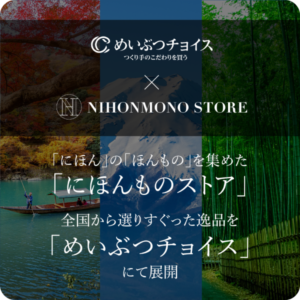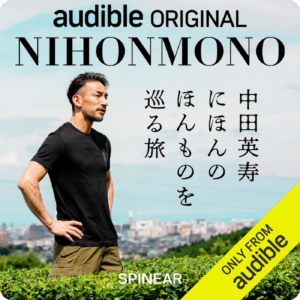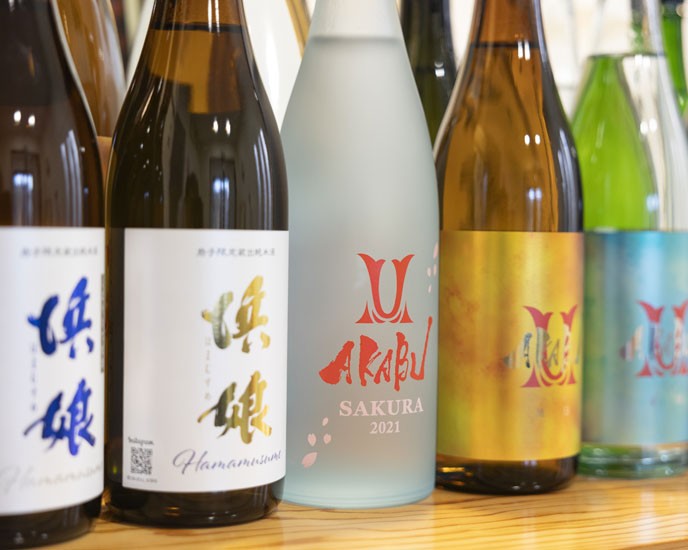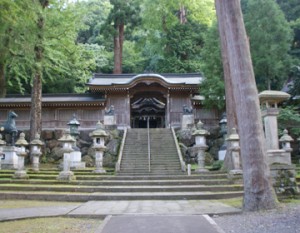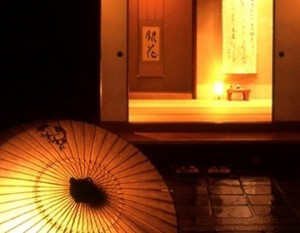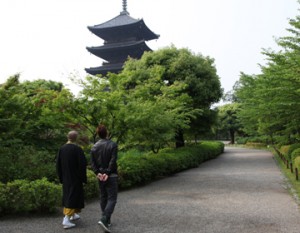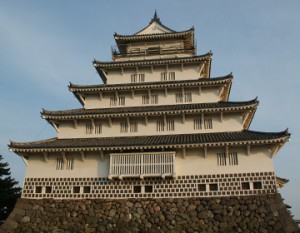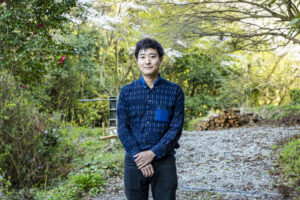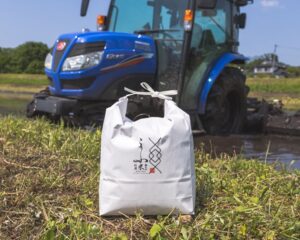Founded in the town of Otsuchi on the coast of Iwate Prefecture, Akabu Shuzo boasts a 130-year history. The young brewers are creating a new history centered on a new brand, “AKABU,” which was born at the brewery named “Resurrection Brewery.
Overcoming the Earthquake and Brewing Sake at the “Resurrection Brewery”

Akabu Shuzo was founded in 1896 in the town of Otsuchi on the coast of Iwate Prefecture. The company was founded by Buhei Furudate in the Akahama district facing Otsuchi Bay, and thus took the name “Akabu.” Its representative brand, “Hamamusume,” has been loved by fishermen and other local people.
However, the Great East Japan Earthquake of March 11, 2011 completely destroyed the brewery, the company building, and their home. Everything was gone, and the thought of closing the business crossed my mind,” recalls Hidemine Furudate, the fifth president of the company. However, encouragement from those around him pushed him to make a fresh start. He immediately began looking around the prefecture for a brewery that would offer him a place to make sake, but many breweries were reluctant to allow outsiders to come in and out, and he was unable to get the kind of response he was looking for.
One brewery that reached out to us on the condition that we work with their brewers was Sakuraface Shuzo, located in Morioka City. In the fall of the same year, Mr. Furudate was able to resume brewing “Hamamusume” with the help of the brewers at Sakura Face Brewery.
In 2011, the Akabu Sake Brewery was able to continue brewing sake without interruption, but Shuho’s heart was filled with hope that he would eventually return to Otsuchi. However, it was difficult to secure a site in Otsuchi, where almost the entire urban area had been damaged by the earthquake and tsunami. If we are going to continue brewing sake, we have no choice but to do it here,” he said. Fortunately, a government subsidy was available, and Shuho decided to build a new brewery in Morioka.
Young brewers gathered at the new brewery

“If we are going to rebuild, let’s build a warehouse where everyone, regardless of age or gender, can work comfortably,” said Shuho. In the fall of 2013, the brewery was completed and named the “Resurrection Brewery.”
Thus, after a two-year absence, sake brewing began at the company’s own brewery. However, the brewers who had worked together in Otsuchi were no longer there. With the future uncertain, they could not say, “We will revive the brewery someday, so please wait for us. As the months passed by, everyone found their way to the next stage of their lives.
It was sad, but it could not be helped. Instead, a motivated younger generation has gathered here. Mr. Shuho looks forward to the future. After the earthquake, about 10 employees were hired in Morioka. Almost all of them had no experience in sake brewing, but the brewery has become much younger with most of them in their 20s and 30s. At the same time, however, sales of “Hamamusume,” which had been growing as a result of the reconstruction assistance, were beginning to decline.
“f nothing is done, the business will dwindle,” said Mr. Kikuchi. We need to create a new character that targets the younger generation, who are not familiar with sake. Just as he was thinking this, his son Ryunosuke, who was studying brewing at Tokyo University of Agriculture, returned home and joined the company. Mr. Shuho decided to “entrust the future of sake brewing to the younger generation,” and appointed Mr. Ryunosuke as toji (chief brewer), entrusting him with the development of a new brand of sake.
Birth of new brand “AKABU”

When the earthquake struck, Ryunosuke was in his first year of college. “I was studying brewing, but I hadn’t thought about whether or not I would take over the brewery,” he says. It wasn’t until he heard that a brewery was to be built in Morioka that his mind was made up. He drank sake from all over Japan, and in 2013, he won the national sake tasting championship in the intercollegiate category. After graduation, he spent several months at the Tokyo office of the National Research Institute of Sake Brewing to study sake brewing techniques, and returned to Iwate in the fall of 2014.
Upon entering the brewery, Ryunosuke immediately set to work on brewing a new brand of sake. He envisioned a sake that his generation would enjoy. He wanted to create a fresh, gorgeous flavor that was different from the robust, mature taste of “Hamamusume,” which had been popular since his grandfather’s time.
When I was a student, I drank all the trendy sake in Tokyo, and what was especially popular among my generation was the fruity aroma and sweetness of “Jyushiyo” and “Jikon”. Using these as a guide, we decided to create sake that even first-time sake drinkers would find delicious.
Thus began the first year of sake brewing. Ryunosuke said, “The facilities and the scale of brewing were very different between a university laboratory and a brewery. I was perplexed by the different workflow,” he recalls. Not knowing what the right answer was, he devoted himself to sake brewing, even sparing time for sleep. The result was “AKABU”
The name of the brewery’s brand name expresses the hope that the sake will “symbolize the future of Akabu Shuzo,” and for the label, a striking design featuring a red helmet and samurai motifs was adopted “so that people will remember it from the visual image it creates. The company focused its sales efforts in the Tokyo metropolitan area to market this new brand as an alternative to “Hamamusume,” which had become associated with the sad image of the earthquake.
AKABU’s rapid progress

The amount of sake brewed in a university laboratory is more than a hundred times larger than in a sake brewery. The 22-year-old toji’s first sake was rated by his clients, mainly sake retailers in the Tokyo metropolitan area, as “so-so for a first-year brewer. About a dozen stores decided to carry the sake, but to be honest, they were not satisfied with the quality.
In the second year, we identified all the problems and made improvements one by one. The second year, after identifying all the problems and making improvements one by one, “AKABU” was much improved, as one of the customers who tasted it said, “This is a new product.” The product was well received, and new contracts increased, mainly in the Tokyo metropolitan area. Sensing a positive response, Ryunosuke focused on improving the quality of the service while maintaining the direction he had set.
In 2016, the company won GOLD in the Junmai Ginjo category and SILVER in the Junmai Daiginjo category of the SAKE COMPETITION, the world’s largest sake competition. The following year, it won GOLD in both categories and was also selected for the highest award, the Prefectural Governor’s Award, at the Iwate Prefecture New Sake Competition. Since then, the sake has been highly acclaimed in various contests and competitions, and the name “AKABU” has spread among sake fans nationwide.
Build together

With the reputation of “AKABU,” Ryunosuke has come to attract attention as a young master brewer who will lead the next generation. However, Ryunosuke himself says, “I cannot make sake by myself. What is important is teamwork.
In his first two years, he had trouble communicating with the inexperienced brewers, and he was overconfident that “I can do it myself. Before the start of the third year of sake brewing, he reviewed the work process and established a system in which “everyone works together.
Originally, this brewery was built by Mr. Shuho with an emphasis on “ease of work.” He relies on machines and systems where he can, and human hands focus on detailed adjustments and management. He has realized a two day workweek with shifts, and has made it possible to work in the koji room during the working hours of 8:00 to 17:00, which used to take all night.
Now that everyone is fully prepared to work on sake brewing, the motivation of the entire brewery is also increased. Ryunosuke smiles as he says, “Now, the work goes on even without me.
In fact, the illustrations of helmets and warriors used on the labels were drawn by the employees in charge of shipping. Everyone who works at Akabu Shuzo is involved in the brewing of one sake,” Ryunosuke says. Ryunosuke’s expression is somewhat proud.
We will not go back to “before the earthquake. Sake brewing continues to evolve

It has been more than 10 years since we started brewing sake at our brewery in Morioka. Are you now able to make the same sake as you did before the earthquake?” Mr. Shuho always answers this question. He is often asked this question during visits to the brewery and during interviews. No, we are making even better sake now.
Currently, Akabu Shuzo’s product lineup consists of about 40 varieties, including seasonal products such as AKABU Newborn (unpasteurized sake). By brand, the “AKABU” series accounts for more than 90% of the company’s products, most of which are shipped outside the prefecture, mainly to the Tokyo metropolitan area.
On the other hand, “Hamamusume,” a representative brand from the Otsuchi era, is distributed exclusively within Iwate Prefecture. It is sold mainly at supermarkets so that local people can easily go out and buy it. Originally, the sake had a matured feel, but over the past few years, the style has been changing to a fresher style, which has been well received by long-time fans, who say it has become more delicious.
The main ingredients are original to Iwate Prefecture, such as “Ginga” rice, which easily produces a clean flavor, and “Giovanni no Chikara” yeast, which produces an apple-like ginjo aroma. Compared to the Otsuchi period, when the breweries in Morioka were blessed with spring water, the Morioka breweries had a hard time securing good quality water, but “I believe that the quality of sake depends more on people’s skills than on ingredients or water. I believe that the quality of sake is determined more by people’s manual skills than by raw materials or water. By carefully discerning and working with his hands, he can get closer to the flavor he is aiming for,” Ryunosuke says proudly.
We want to pass on sake to the future

The brewers, who were inexperienced at the beginning, have gained experience and have grown to become an indispensable part of the Akabu Sake Brewery. Two of them have also passed the Nanbu Touji examination. I’m thinking of putting their names on the bottle labels when the time is right,” said Shuho. I’m thinking of putting their names on the bottle labels, too, if the timing is right,” says Shuho, his eyes narrowing.
Ryunosuke, who became a toji at the age of 22, is now in his 30s. His desire to make sake that is accessible to the younger generation has not changed. He continues to brush up on his brewing skills and exploration, saying, “Sake brewing is the accumulation of experience year by year.” In recent years, he has expanded the variety of his products to include sparkling sake and low-alcohol sake that is “less tiring to drink. In the future, the company hopes to collaborate with local liquor stores and restaurants to create opportunities for people from all over Japan to come “all the way” to Iwate to drink AKABU.
Even people who normally drink beer or shochu will have an opportunity to try sake. I want to be like a ‘gateway to sake’ for people to think ‘this is delicious’ and ‘I want to drink it again. Every drop born from his daily efforts and challenges will build a new history for Akatake Brewery and create the future of sake.
